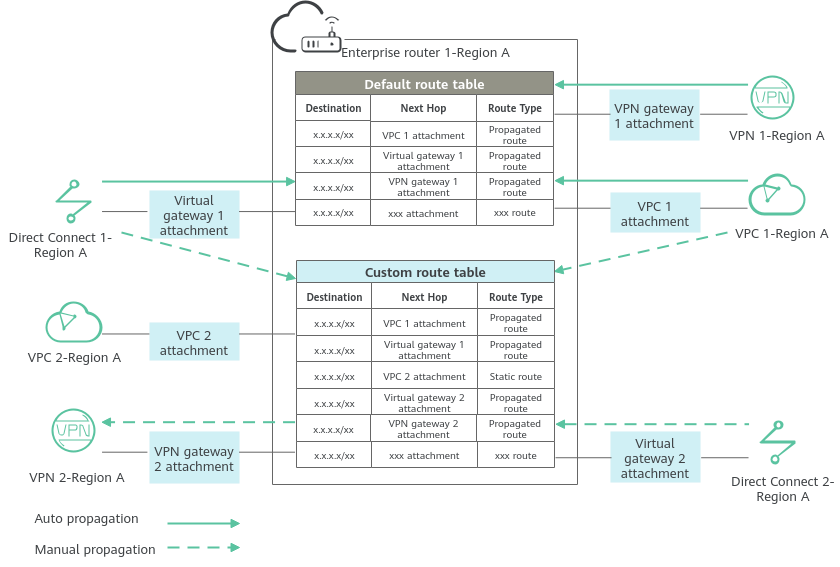Route Overview¶
What Is a Route?¶
Routes are used to forward packets. A route contains information such as the destination, next hop, and route type.
You can create a propagation for attachments to automatically propagate routes to route tables or manually add static routes to route tables.

Figure 1 Propagated routes and static routes¶
Route Type | Description | How to Create | Description |
|---|---|---|---|
Propagated routes | Propagated routes are routes that attachments propagate to the route tables of the enterprise router. They cannot be modified or deleted. | To create a propagation, see Creating a Propagation for an Attachment in the Route Table. | Routes are classified into propagated routes and static routes. The routes shown in Figure 1 are described as follows:
|
Static routes | Static routes are manually created and can be modified or deleted. | To create a route, see Creating a Static Route. |
Route Priority¶
If there are multiple routes with the same destination but different targets in a route table, the route priority is as follows:
Static route > Propagated route for VPC attachment > Propagated route for virtual gateway attachment > Propagated route for VPN gateway attachment
Note
Static routes are manually configured and the destination of each static route must be unique in a route table.
Propagated routes are automatically learned by the system and may have the same destination in a route table.
A static route and a propagated route may have the same destination in a route table.